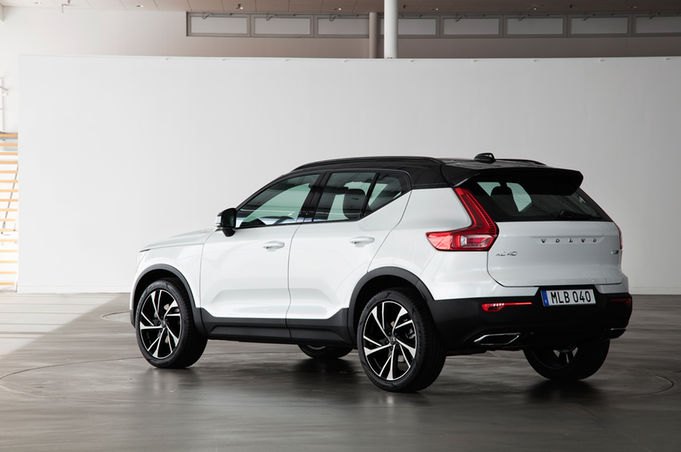The Six Vehicles That Wildly Outdid Reasonable Sales Expectations in America in August 2020
Gauging economic health during the latter stages of 2020 is proving remarkably challenging. On the one hand, there’s grievous unemployment caused by COVID-19 shutdowns; on the other hand, bicycle sales are booming and backyard pool installations skyrocketed. Contrast the fact that the Dow Jones isn’t far from its six-month high with a 32 percent U.S. GDP loss in Q2.
The same sort of diametrically opposed outcomes are visible in the U.S. auto industry, as well. Only a handful of automakers still report monthly sales figures – Honda, Hyundai, Kia, Mazda, Subaru, Toyota, Volvo – yet within those brands there were remarkably different results coming out as we exit the summer. We wanted to find the vehicles that destroyed reasonable recovery rates in August with significant year-over-year improvements. But we didn’t expect them all to originate from the same two automakers.
To get a clear gauge on the biggest overperformers, we excluded vehicles that didn’t produce at least 500 sales in August 2020, the kind of volume that should eliminate the wild fluctuations of severely low-volume models. Vehicles that are new to market or returning from hiatus (say hello to the second-generation Toyota Venza) are ineligible, as well.
Sales at the 10 remaining reporting brands are down 19 percent through the first two-thirds of 2020 and were still off last year’s pace by 18 percent in August 2020. Yet within those showrooms, there were six models that, despite everything that’s wrong with 2020, sold in far greater numbers last month than during the same period one year ago.
Timothy Cain is a contributing analyst at The Truth About Cars and Driving.ca and the founder and former editor of GoodCarBadCar.net. Follow on Twitter @timcaincars and Instagram.
More by Timothy Cain
Latest Car Reviews
Read moreLatest Product Reviews
Read moreRecent Comments
- Kjhkjlhkjhkljh kljhjkhjklhkjh A prelude is a bad idea. There is already Acura with all the weird sport trims. This will not make back it's R&D money.
- Analoggrotto I don't see a red car here, how blazing stupid are you people?
- Redapple2 Love the wheels
- Redapple2 Good luck to them. They used to make great cars. 510. 240Z, Sentra SE-R. Maxima. Frontier.
- Joe65688619 Under Ghosn they went through the same short-term bottom-line thinking that GM did in the 80s/90s, and they have not recovered say, to their heyday in the 50s and 60s in terms of market share and innovation. Poor design decisions (a CVT in their front-wheel drive "4-Door Sports Car", model overlap in a poorly performing segment (they never needed the Altima AND the Maxima...what they needed was one vehicle with different drivetrain, including hybrid, to compete with the Accord/Camry, and decontenting their vehicles: My 2012 QX56 (I know, not a Nissan, but the same holds for the Armada) had power rear windows in the cargo area that could vent, a glass hatch on the back door that could be opened separate from the whole liftgate (in such a tall vehicle, kinda essential if you have it in a garage and want to load the trunk without having to open the garage door to make room for the lift gate), a nice driver's side folding armrest, and a few other quality-of-life details absent from my 2018 QX80. In a competitive market this attention to detai is can be the differentiator that sell cars. Now they are caught in the middle of the market, competing more with Hyundai and Kia and selling discounted vehicles near the same price points, but losing money on them. They invested also invested a lot in niche platforms. The Leaf was one of the first full EVs, but never really evolved. They misjudged the market - luxury EVs are selling, small budget models not so much. Variable compression engines offering little in terms of real-world power or tech, let a lot of complexity that is leading to higher failure rates. Aside from the Z and GT-R (low volume models), not much forced induction (whether your a fan or not, look at what Honda did with the CR-V and Acura RDX - same chassis, slap a turbo on it, make it nicer inside, and now you can sell it as a semi-premium brand with higher markup). That said, I do believe they retain the technical and engineering capability to do far better. About time management realized they need to make smarter investments and understand their markets better.








































Comments
Join the conversation
Volvo may be showing a big increase year-over-year, but they are still selling tiny numbers of cars. So why does it really matter? Hopefully they are selling enough to stay around for a while. I'm all for driving things you don't see 25 of in every parking lot though.
Kia is the next Toyota.